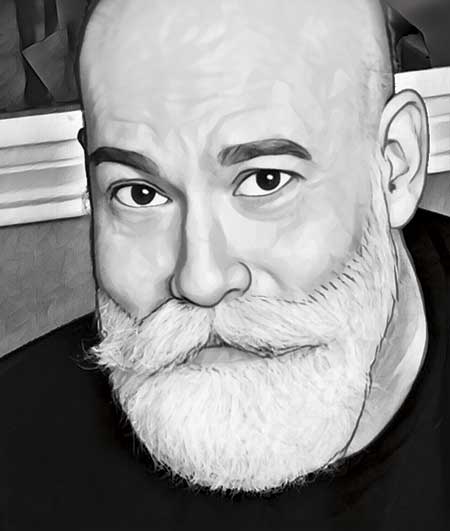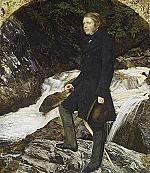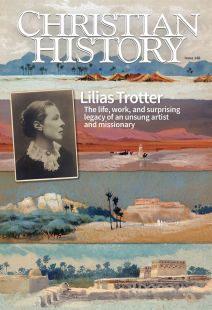Meet the team: Doug Johnson

[Doug Johnson, twenty years art editor for CH]
How long have you been at CHI, and what is your role?
My first official issue was Michelangelo (#91 in 2006), almost 20 years ago. I’ve been design editor, and I create the visual editorial. I listen to the editors discuss the issue to bring a compelling visual expression of the content. Images are editorial content and directly bring information words alone can’t express. I seek to make the content more tangible, thinking of contemporary visual parallels. I encourage using different artistic mediums, such as sculpture, engravings, stained glass, paintings, and relevant everyday objects. A strong design layout might have a painting, a sculpture, a papyrus fragment, and an object you might hold, like a ring.
Images can add contrast to what you’re reading and bring out humor or irony, directly communicating more strongly than words alone. I use consistent visual vocabulary but make unexpected juxtapositions when editorially appropriate. I strive for readers to see articles differently than expected. Without the art researcher and the editor’s vision, I couldn’t do it.
What is your favorite part of the job?
I like collaborating with editors and image researchers. Each brings a distinct perspective. We find an overlapping sweet spot in what we’re looking to say, when we’re tracking together. That’s a great feeling.
What do you most wish readers knew?
High-quality images can be quite challenging to access for historical topics, and some seem impossible to get. I enjoy the challenge of working with diverse qualities of images and maintaining visually consistent standards, especially when only low-resolution copies are available instead of the lost original high-quality artwork. The range of image quality is very broad. I don’t want that to obscure readers’ experiences. Each image is retouched to enhance how it will print.
What do you do in your spare time?
I am a travel photographer and am on the road most of the time. One of the really great things about working with Christian History magazine is being able to work remotely. I have a 27-inch iMac that I bring with me. If necessary, I’ll go into a place like Panera and set it up to work for hours. I try to be discreet; however, I meet a lot of curious people.
I enjoy that. I’ve met everyone from motivational speakers, financial advisors, and artists to even a Memphis woman who had known Elvis as a teen. Right now I’m at a historic grist mill in rural West Virginia. I’m a fan of old-school diners and vintage neon signs, whether functioning or abandoned. I spent a month in New Jersey going to 120 diners and tried to eat a cheeseburger at each one. In Memphis I even went to every obscure barbecue joint rumored to be the best by locals. CH
By Doug Johnson
[Christian History originally published this article in Christian History Issue #148 in 2023]
Next articles
A key in the Master’s hand
An unsung artist and missionary whose story unlocks many doors
Miriam Huffman RocknessLearning to see
John Ruskin loomed large over an art world and a culture wrestling with both truth and beauty
Kirstin Jeffrey Johnson & Jennifer TraftonSupport us
Christian History Institute (CHI) is a non-profit Pennsylvania corporation founded in 1982. Your donations support the continuation of this ministry
Donate






